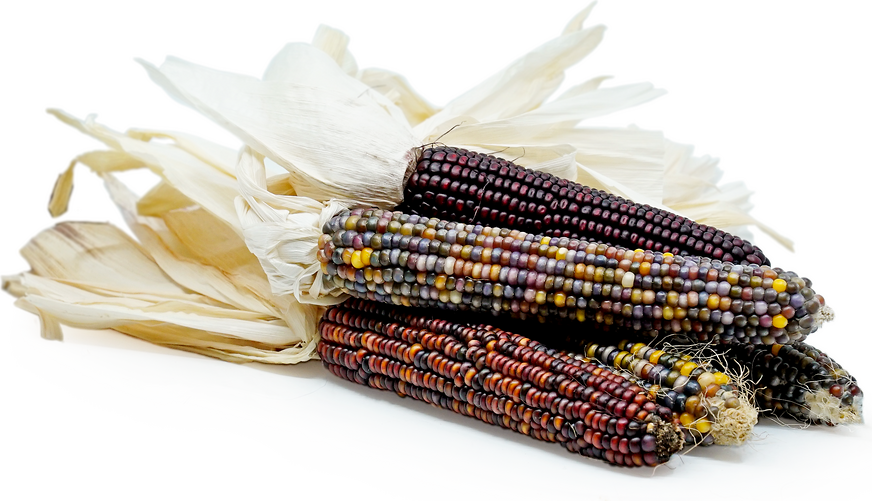


Ornamental Dried Corn
Estimated Inventory, 18 ct : 0
This item was last sold on : 11/22/24
Description/Taste
Ornamental Corn varies in size from medium to large and has a diverse array of kernel and husk colors. The papery, semi-rough, and multi-layered husk ranges from ivory to purple and encases the entire cob until peeled back. When peeled and dried, the husks become stiff and retain the shape it is molded to. Inside the husk, the kernels also range in color from white, red, orange, brown, to blue, are hard, and dent-free. Only specific varieties of Ornamental Corn are edible, and when consumed it has a mild and starchy flavor.
Seasons/Availability
Ornamental Corn is available in the late summer through fall.
Current Facts
Ornamental Corn is a type of grass that is a part of the Zea mays species. Also known as Indian corn, Calico corn, and Flint corn, Ornamental Corn had some of the oldest corn varieties and was first cultivated by Native Americans in the Americas. There are many varieties of Ornamental Corn such as the Autumn Explosion, Green and Gold Splendor, Shock Dent, and Indian Art. Ornamental Corn has a hard-outer layer and a soft endosperm, which allows it to have a long shelf life and is most commonly used as decoration in fall displays.
Nutritional Value
Ornamental Corn contains some vitamin A, vitamin C, calcium, and iron.
Applications
Ornamental Corn is not commonly consumed, but some varieties are edible and can be ground down to make cornmeal and flour, hominy, polenta, or popped for popcorn. Ornamental Corn will keep 4-6 months when stored at room temperature.
Ethnic/Cultural Info
Ornamental Corn is widely used for fall decorating and creative crafts such as centerpieces, wreaths, and displays. The ears can be shucked back to expose the colorful kernels and can be paired with gourds and pumpkins on tables. The husks can also be tied into bunches and mixed with bundles of wheat.
Geography/History
Corn did not grow wild and was first domesticated from teosinte, which is a wild Mexican grass. It was originally cultivated by the Indians in the Americas, introduced to Europe in the 1400s by Christopher Columbus, and soon after it spread around the globe via explorers and traders. Today Ornamental Corn can be found at farmers markets, specialty grocers, and through online catalogs for home gardening in Europe, Asia, Australia, Canada, the United States, and Mexico.
Recipe Ideas
Recipes that include Ornamental Dried Corn. One
| Food Skills For Self Sufficiency |
|
Cornmeal and Grits from Ornamental Corn |




